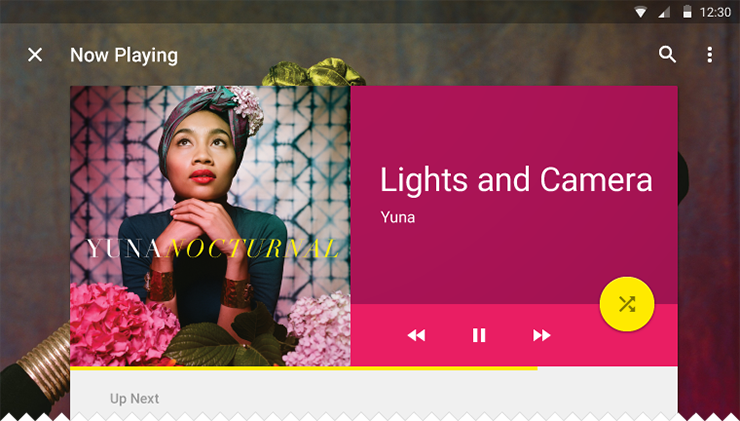Material Design
The new design language presented at Google I/O

I’m so happy that Google made its move in the Human-Computer-Interaction field re-affirming the central role of the human experience (“gathered knowledge of reality”) as foundation of the process of Interface Design.
Yesterday I was looking at their Material Design style guide, or design vocabulary, and everything felt so right, so obvious, so natural, but at the same time so fresh, so new (the use of bold colours and flat design, but in a new smarter way, without all the problems and idiosyncrasies introduced by Apple with the iOS7 design).
I was even happier this morning, when I read the notes taken by Luke Wroblewsky at the presentation at Google I/O and I discovered they used the word “metaphor” to explain what design is (should be):
The material design language aims to unify software with the fundamental physics of how things work. Material is the metaphor. Metaphors are like short stories, they communicate quickly and more deeply then just words. Metaphor is a back-story for the design – it unifies things for the audience and for developers.
And this is why I strongly criticise almost all the latest approach to Design that Apple have followed (especially with iOS7). I’m talking about getting away from the physical metaphor of interfaces (I’m not talking about skeuomorphism) and the basic principles of human perception and interpretation of reality. About how our brain uses icons, shapes, spaces, colours and affordances to unconsciously create – in a fraction of a second – a mental map of a space (even if on a small screen, even if “virtual”). About how our eyes read the written text using the spaces/holes/curves in the letters and the saccades in the words (I mean, it’s the basic of typography) without a real active cognitive process to interpret the single words of text. I’m talking about movement, transitions and effects used to convey information and drive attention to the “active/important” elements (“Motion provides meaning“).
So, welcome to the “newborn” Material Design: visual language that synthesizes the classic principles of good design with the innovation and possibility of technology and science.
PS: has the Jason Mesut presentation been prophetical in this? We had a long and alight discussion in the office this morning, about the comparison Apple-Google, iOS7-Material Design, virtual-physical, and I am happy that at the slide #167 he confirms my hypothesis :)
Update #1: this is the opinion of Khoi Vinh (Subtraction.com) about Material Design:
Material Design still strikes me as being fairly anonymous, lacking in uniqueness or personality or point of view, and still short of being truly beautiful. It’s nice work, but like many things that Google does, it feels iterative, and in that light, it might be more important in that it paves the way for a true aesthetic breakthrough somewhere further down the line.
Update #2: and this is what Elliot Jay Stocks thinks about it:
Google’s design has grown up. It’s been gaining maturity for some time now (the company’s recent iOS apps are a great example), but this feels more significant to me: this feels like a turning point.
Update #3: some other links and reviews:
- Living in a Material World – Brand New
- The Smart Problem-Solving Behind Android’s Awesome New Design Language – Wired
- Top designers react to Google’s new ‘Material’ design language – VentureBeat
- Google Is About To Take Over Your Whole Life, And You Won’t Even Notice – Co.Design
- How Google designed Android L – The Verge
Link: http://www.google.com/design/spec/material-design/introduction.html